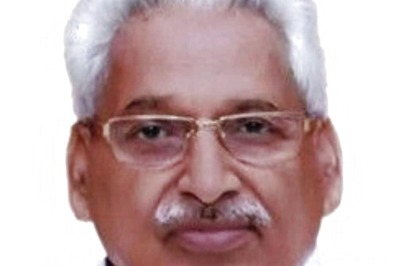
views
Good inputs. Guaranteed remunerative price. Assured timely procurement.
When India unleashed green revolution in the 1970s to increase production, this simple but robust three-pillar formula helped for three decades, until yields stagnated, global markets ravaged the local markets, governments steadily withdrew from the farm sector, developed world subsidies bulldozed our small and marginal farmers, and an unprecedented agrarian distress enveloped our countryside.
Since then, a new deal has eluded the rural-farm sector, the country’s largest employer. For two decades India has been clueless about what to do with farming and farmers – support or open it completely for the private players to take over.
Year unto every year, consumers get cheap food; profits go to market players, while the risks and losses are borne by farmers.
We flittered with band aids – compensation packages, loan waivers, insurance schemes and so on. We opened markets for some crops; kept them closed for others.
We tried floating an ever-green revolution, some missions to reform the sector, created e-markets, and set up infrastructure funds. But, when we see millions of migrants upping themselves from their villages to make a swelling footloose workforce all over the country only to precariously walk back, hitch-hiking, taking risks on their lives, in the current Covid-19 crisis, to their native villages that provides social if not the economic security, one wonders if all what was done ever helped farmers improve their economy.
In some states for some farmers, it did. But overwhelmingly, it did not.
We are back to square one. Ironically, as a relief, we are falling back on the same programme – albeit reluctantly – that this regime derided as a pits-digging exercise, the Mahatma Gandhi National Rural Employment Guarantee Scheme (MGNREGS), free distribution of food-grain to the struggling masses, detested as a “social-era” hangover, and some cash-dole. All of them, starkly under-funded.
Since 2000, there has been no budget not superficially dedicated to farmers. Since 2000, there has been no year without atrocious numbers of farmers committing suicide across India and tens of thousands of others selling their farmlands and migrating in distress elsewhere for work – whatever work they find.
So, when finance minister Nirmala Sitaraman announced on Friday – on Day 52 of the Covid-19 lockdown – the 11-point programme repeatedly christened ‘big reform’ to boost the farm sector, one wonders who her farmer is. For, over 80 per cent of the Indian peasantry is small, marginal, and rain-fed – a one-crop farmer who doubles up as a migrant or footloose daily wager wherever he finds work for nearly half the year.
A large number of them are women farmers, shouldering the burden of the farm without a land title. Expecting them to sell their produce anywhere in the country is like living in a fool’s paradise.
That farmer has Rs 500 a month, or a paltry Rs 16.5 a day, to fall back upon – enough to call it a Pradhan Mantri Kisan Samman Yojana (PMKSY); some free ration; and a future replete with uncertainties.
Thousands of them, working away from their villages, are struggling to return to their home after having lost the only thing they had: their dignity. On Friday, they got a reform they never demanded.
The 11-point programme sounds like an extension of the past six or seven budgets, less of well-thought-through stimulus to provide relief to the embittered peasantry coping ludicrously with Covid’s economic aftermath that has, only just, begun.
If the Union Cabinet led by Modi takes 50 days to think through and comes up with this as their best shot, the Indian peasantry better stop expecting anything of the Centre.
For, if they consulted farmers, the FM would have addressed one structural issue millions of farmers and those working with them have been flagging: rain-fed farming, the single most important problem that India needs to fix in order to bring some equitable growth to the sector amidst climate change.
The belief that amending or tweaking the Essential Commodities Act would help farmers realise better prices is much like the old belief that globalization on its own would bring prosperity to the farmers.
It would help some, but without a broad architecture in place, the supporters of that notion would be proved wrong again, when largely indebted peasantry would be exploited by traders and aggregators.
The National Animal Disease Control Programme that aims to vaccinate the animals is a welcome step, but would not augment income. At best, it would – if implemented earnestly – save some outgoings on that head, but not much. India, for years, faces massive shortages of vaccines for the livestock.
We would need a magnifying glass to find immediate relief if there’s any – and I haven’t found one – for the farmers or farm labourers in these measures. The states are on their own to cope with what would soon become a barrage of demands from the economically ravaged countryside.
‘Atmanirbharta’ has assumed a whole new meaning now.
Not one word to assure the farmers that the kharif and rabi produce from the last season, would be fully procured and paid for, or losses compensated at least partially if not fully.
Lakhs of quintals of cotton is lying with farmers; thousands of tons of maize, paddy, wheat; pulses; cereals; fruits; veggies…agriculture markets, supply chains, have been severely disrupted.
Most steps are about extension of credit facility to farmers through Nabard.
But no clarity or word of assurance that the nationalized banks would lend them credit, notwithstanding their current crop loan defaults, in the season beginning in less than a month. No guarantee also that whatever they grow in the next one year would be fully procured, paid for.
The magnanimous-sounding Rs 20 lakh crore stimulus package in reality is turning out to be a budgetary statement intended to manage headlines and possibly divert our attention from the rising Covid graph.
Be that as it may, some announcement is still better than no relief. But it benefits the markets in a long term; it does not help the beleaguered peasantry today to mitigate their economic pain.
The Rs 1 lakh crore infrastructure fund might possibly help someone tomorrow. Not the farmer today.
The Friday announcements also indicated something we have known for some time: The farmers have lost any voice they once had in the Parliament or the state legislatures. Who gets consulted? How? We have no clue. It’s unclear if the states were even consulted while opening their borders for a free, inter-state movement of commodities. One can foresee massive inter-state conflicts in the future over this.
Niti Aayog’s own voluminous reports – some 20-21 – on boosting agriculture are lying in the bin.
The Prime Minister has with his ever-shifting goalposts come a long way. In April 2014, he promised to give farmers a support price recommended by the Professor MS Swaminathan-led National Commission for Farmers (NCF) – 50 per cent over production cost. He buried that promise. Then, from the ramparts of the Red Fort, he assured them he was doubling their income by 2022. Whatever happened to that! With the second carrot though, the peasantry forgot the first one.
When the country plunged into despair after demonetisation in 2016-2017, in tears he told farmers to bear with him for a few days and that he would set everything right; that his is a poor-man’s government, a government in the service of people. They bore the losses for a decision he himself does not talk about now. Today, he’s telling them, reduce dependence on APMCs and all the country is a market – sell anywhere to anyone, as if the farmer was desperately waiting for this miracle cure to begin selling his produce from tomorrow for big profits.
Market is one thing. Remunerative price, quite the other. The former is no guarantee for the latter.
Almost every state abounds with stories of how the struggling farmers found ingenious hard ways to sell at depleted prices their produce at consumers’ door steps, despite a lockdown.
In Jalna, sweet lime growers have distributed their fruits free. Grape growers have taken huge sticks. Water-melons gone waste. Mango growers have seen demands and exports plummet.
Vegetable vendors have been swelling in numbers all over the country, risking their lives, to sell farm fresh to urban consumers, notwithstanding the summer heat. They are left in the lurch.
Tens of thousands of farmers in this country are tenant farmers, who don’t own land but pay big rentals to continue farming tied to complex lending-borrowing processes without support, because there’s no job for them anywhere. A reform would mean giving him a formal stake, not his further exploitation.
Huge chunks of lands are in tribal hinterlands, with virtually zero investments, private or public.
Fisheries or animal husbandry or dairy or medicinal herbs or horticulture or sericulture – in short any agri-allied activity – sans a robust long-term policy for tapping internal and external markets, branding, and strong regulation would be no less a sham. We have seen this happen umpteen times in the past. Remember safed-musli revolution? Or bio-diesel or ethanol? Or Jatropa Curcas that people called circus!
Farmers’ worries, therefore, abound:
1 - What happens to their current loan burden, both formal and informal; would banks lend them fresh loans for 2020-21 if they default, which they most probably will, on formal loan payments?
2 – Who would procure stocks of cotton, pulses, oilseeds, paddy, and fruits from kharif and rabi seasons, given the massive disruptions in physical and virtual markets, supply chains, and steep drop in demand?
3 – What should they sow, if there’s no guarantee from markets or governments because demands for most crops, other than few commodities, would nosedive?
4 – And if farmers are in doldrums, what happens to the landless? There is a less likelihood that a vast population would migrate this year to the cities for work when Covid-19 threat still reigns.
That the 20 lakh crore rupees did not address the immediate worries of the bankrupt small farmer is a big let-down. Bigger disappointment is, we still don’t have new pillars in place for farmers’ turn-around.


















Comments
0 comment